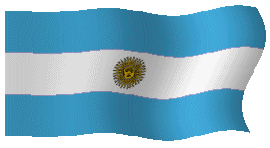
B"H
Jewish  Tours
Tours
 Buenos Aires, Argentina
Buenos Aires, Argentina
ARGENTINA, South American Federal Republic, general population (2004) 39,150,000; Jewish population 190,000.
Tensions between the settlers and the administration often resulted in large groups leaving to found independent settlements. In June 1901 about 40 families settled in Villa Alba (now called General San Martín) in the central Pampas after leaving the colonies of Entre Ríos. In 1906 about 20 families that left Moisesville, founded Médanos in the south of Buenos Aires province. In 1923, 80 families that left Narcisse Leven, Barón Hirsch, and Montefiore for the Chaco, as a result of the cotton boom, dispersed among settlements such as Charata and General Pinedo. In 1928, the settlers in Barón Hirsch acquired 8,653 hectares of land in order to settle their children and relatives and named their colony Akiva Ettinger. Other settlers in Entre Ríos and Santa Fé also bought land independently for settlement purposes.
The idealism and initiative of Isaac Losow brought about the settlement of 40 families in 1906 in General Roca in the heart of the uninhabited Río Negro territory. In 1941, despite its isolated location, 28 families were still living in the settlement. During the 1930s, the Asociación Filantrópica, composed of immigrants from Germany, established a farm on the island of Choele Choel in the Río Negro. Until it closed down c. 1941, it accepted about 150 young immigrants for training in fruit growing and afforestation. In 1941 the Fomento Agrario set up a fund to encourage agricultural settlement in the colony of Julio Levin in Buenos Aires province. The colony numbered about 20 families who had small holdings of 4½–7 hectares on which they grew vegetables and raised dairy cattle. However, the colony soon became a vacation center and some Zionist pioneer movements established training farms there.
Agricultural settlement outside the control of ICA,
with the exception of Julio Levin, was even more geographically marginal than
that of the ICA colonies. This was, of course, dictated by both
the limited financial means at the disposal of the settlers and their strong
idealism. In 1964 the number of agricultural settlers outside the ICA
framework was estimated at 237. Despite the fact that by the 1960s the number of
families whose source of income was the land had fallen to under 2,000, the
large majority of whom were not living on
|
Visite nuestro sitio/Visit our home page: |